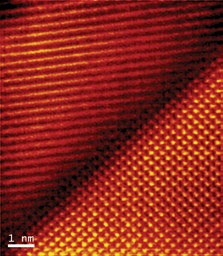Martin Harmer, director of Lehigh’s Center for Advanced Materials and Nanotechnology, has received the 2010 W. David Kingery Award from the American Ceramic Society (ACerS).
The award recognizes “distinguished lifelong achievements involving multidisciplinary and global contributions to ceramic technology, science, education and art.”
Harmer and his students, in one research project, have identified six grain boundary “complexions,” each characterized by a distinct rate of grain growth, in the ceramic alumina. The complexions can be controlled by making changes, often subtle, in chemistry and temperature.
The discovery could help engineers dramatically improve the formation and properties of ceramics, Harmer says, as grain boundaries play a key role in the creation of ceramic solids from powders and in the mechanical, chemical and other properties of the larger bulk material.
In another project, Harmer has been applying the complexion concept to a longstanding problem in metallurgy—the fact that metals like nickel, aluminum and copper, which are intrinsically ductile, are prone to embrittlement when exposed to liquid metals such as bismuth and gallium.
Harmer has earned international acclaim for his studies of the properties of structural and electronic ceramic materials and their control at the micro- and nanoscale. In 2006, he was awarded a Humboldt Research Award for senior scientists by the Alexander von Humboldt Foundation.
In 2008, Harmer received ACerS’ Robert B. Sosman Award, the top honor in ceramics, which is given annually to the person judged to have made the most significant contribution to the field of ceramics.

